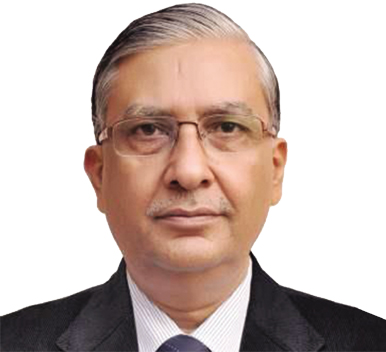India is witnessing rapid pace of expansion of its towns and cities. Though the last fiscal was a hard-hit on our country’s infrastructure, wherein numerous transport projects were delayed or cancelled, the governing authorities have always considered effective transport networks as one among its prime development agenda. It is predicted that by 2030, a population of 40 percent will be living in urban ecosystems. This population pressure has a direct impact on the transport infrastructure of a city. Futuristic and efficient transport networks leverage its scope as a favorable economic investment destination.

Editor-in-Chief Ravi.Gupta@elets.in
To meet the increasing population load and their travel needs, city planners have to think out-ofthe- box and much ahead of times. The advancement in construction technologies and innovations has transformed the outlook of transport networks and assisted in utilizing multi-modal models to develop connectivity networks. Metro Rail as Mass Rapid Transport System (MRTS) is redefining the perception of people towards public transport – as these are smarter, faster and convenient. We explore some of the upcoming metro projects in this edition.
Moving from roads to sea, the country today is on a transformational mode in developing and equipping world-class international deepwater ports. Ports is one such sector which has been forging ahead as one of the main drivers of our economy despite the down slide in economy and market dynamics. The country has a long coastline of 7,517 kms with its 13 major and about 200 non-major ports. These play a critical role in the maritime transport and international trade activities. The robust opportunities offered by the sector have made Public-Private Partnership approach a favorite in project execution models. A proactive approach is also being witnessed by the governing bodies in our country, with the ambitious Maritime Agenda, National Maritime Policy etc. This sector enjoys 100 percent FDI permission for port development and 100 percent income tax exemption for a period of 10 years. With an objective to secure value for public money and provide efficient cost-effective services, the Planning Commission now wants rates at the ports owned by the states to be regulated. This move has attracted mixed responses from the stakeholders and major ports involved in the sector have welcomed this move as a proactive approach. The edition traverses across major port projects in India to feel the pulse of this sector.
Furthermore, the reforming pace of innovative technologies in fast-tracking and reforming the operational approach in roads, cement & concrete, railways, commercial vehicles and developing eco-friendly constructions are being explored. ICE Connect presents to its dedicated readers the distinct technological transformations, industry trends and evolving innovations transforming the pace of infrastructure sector in India.





















